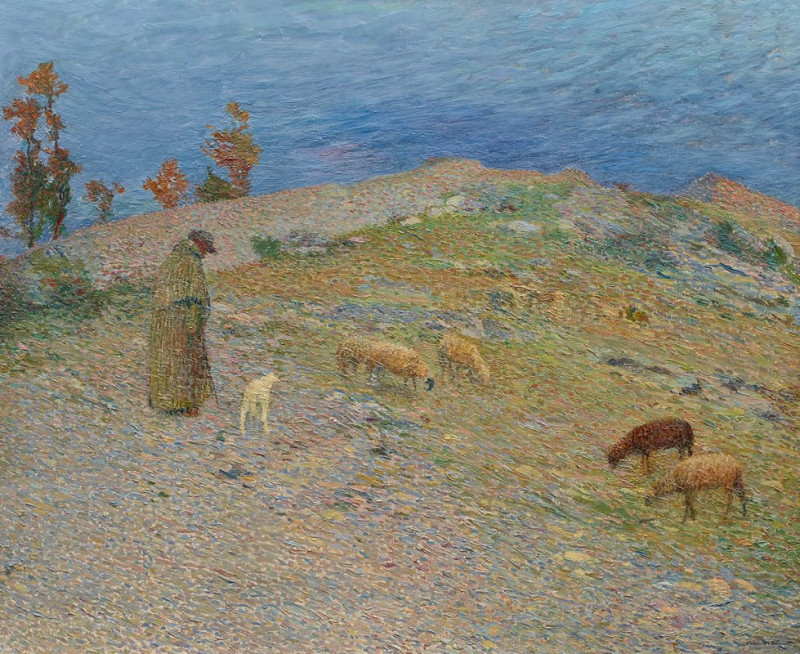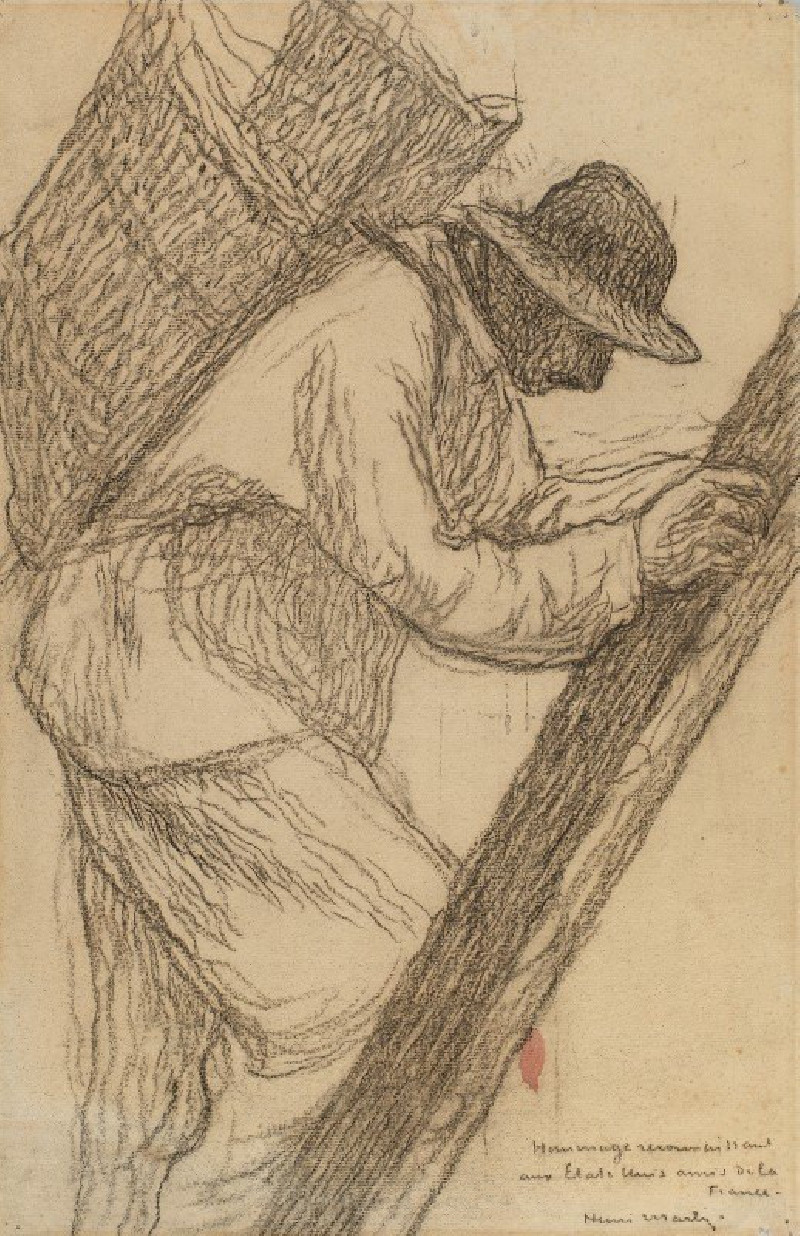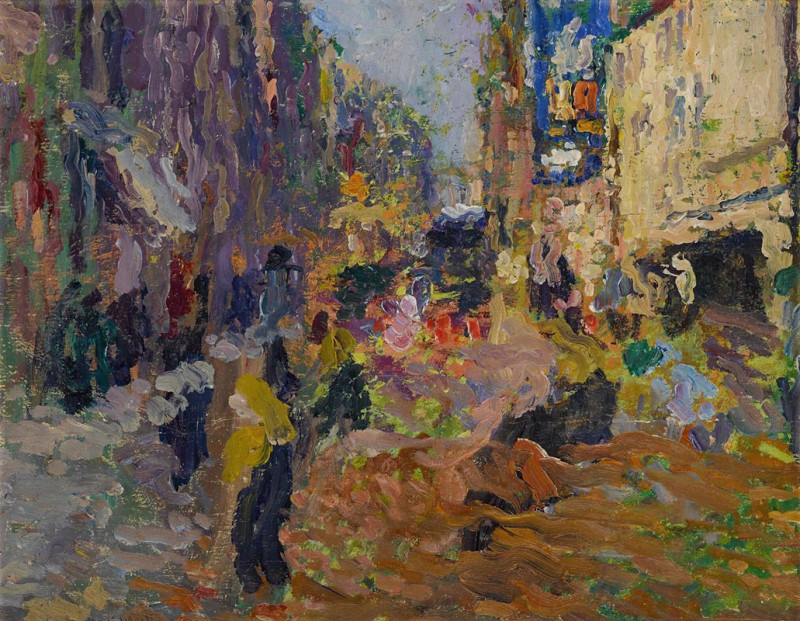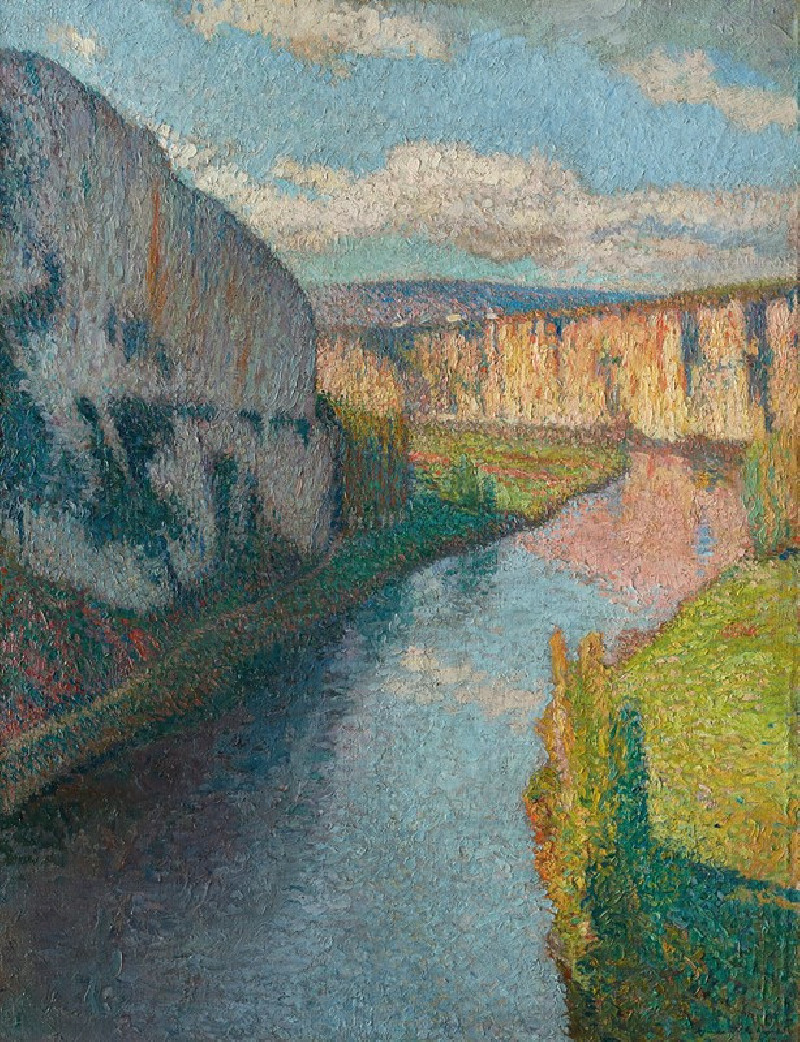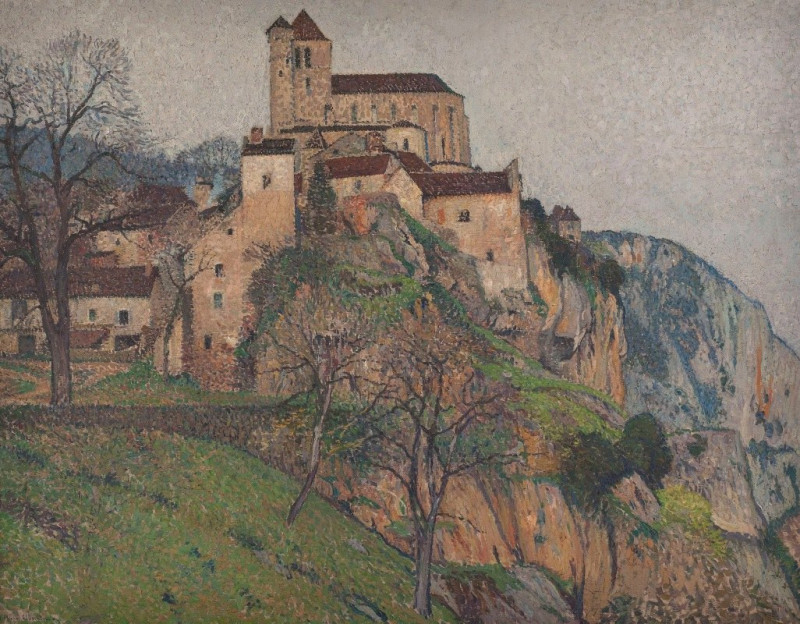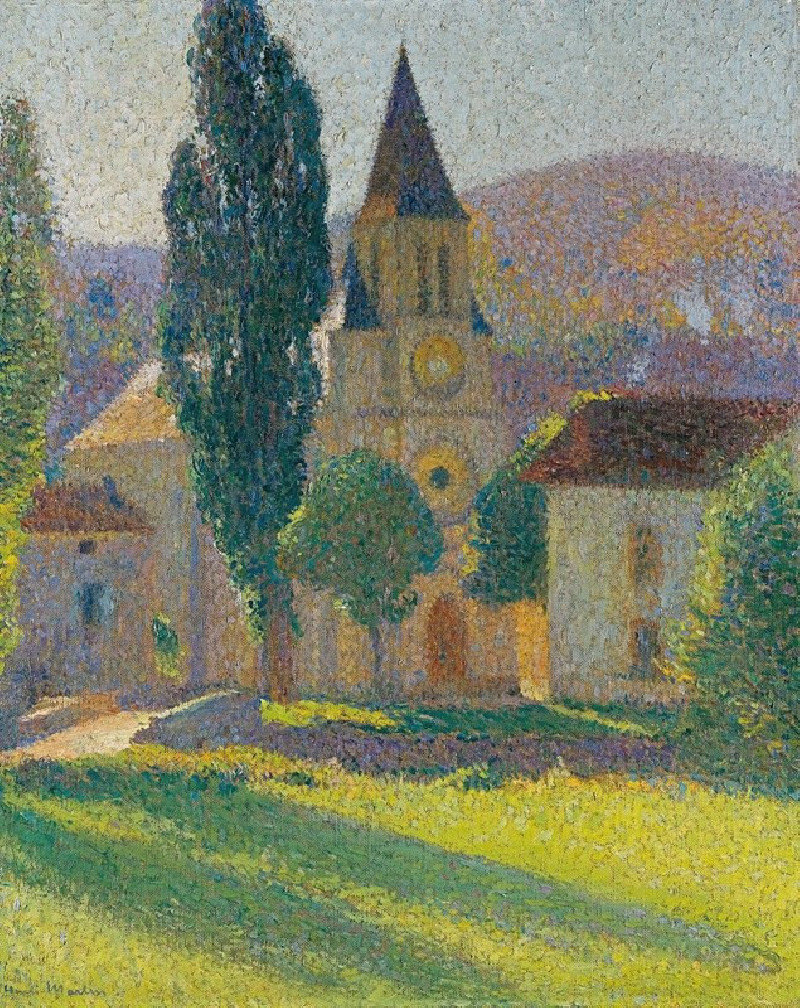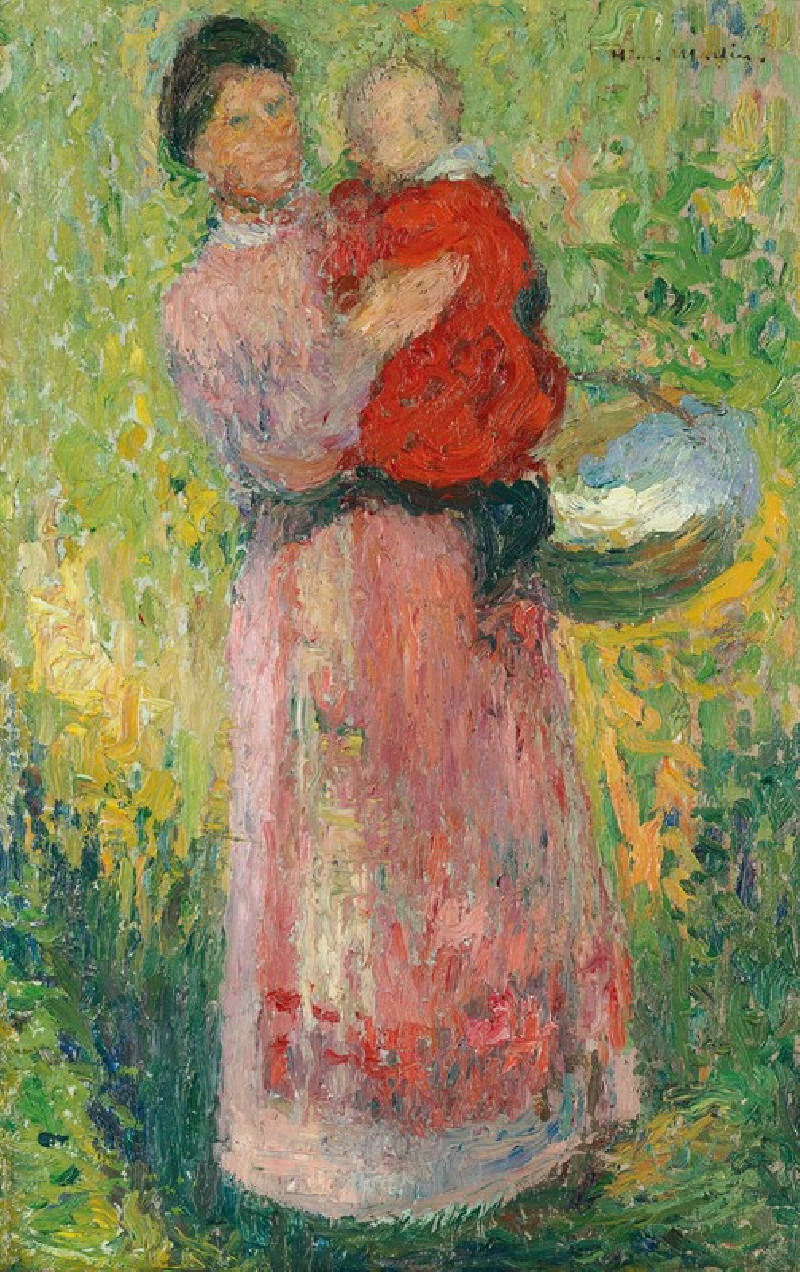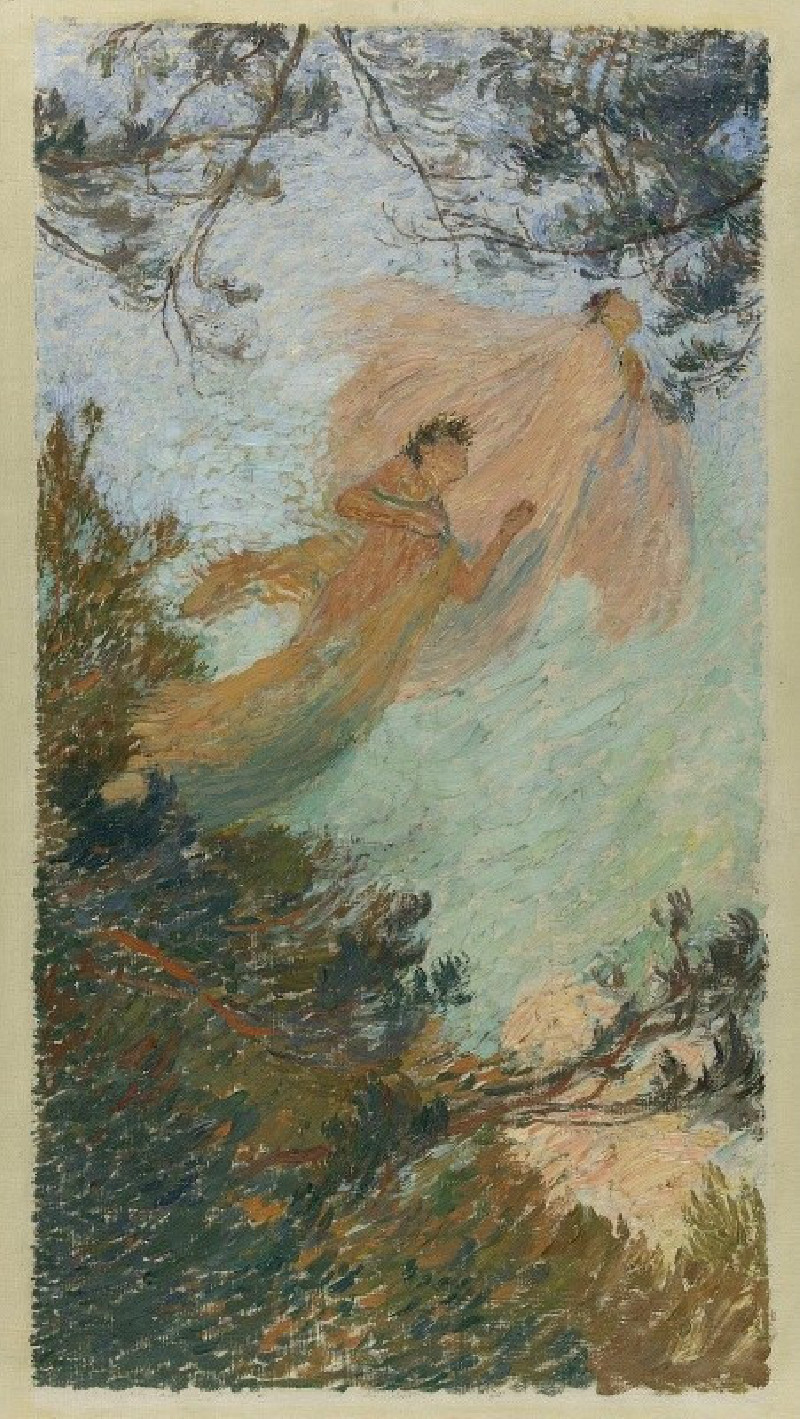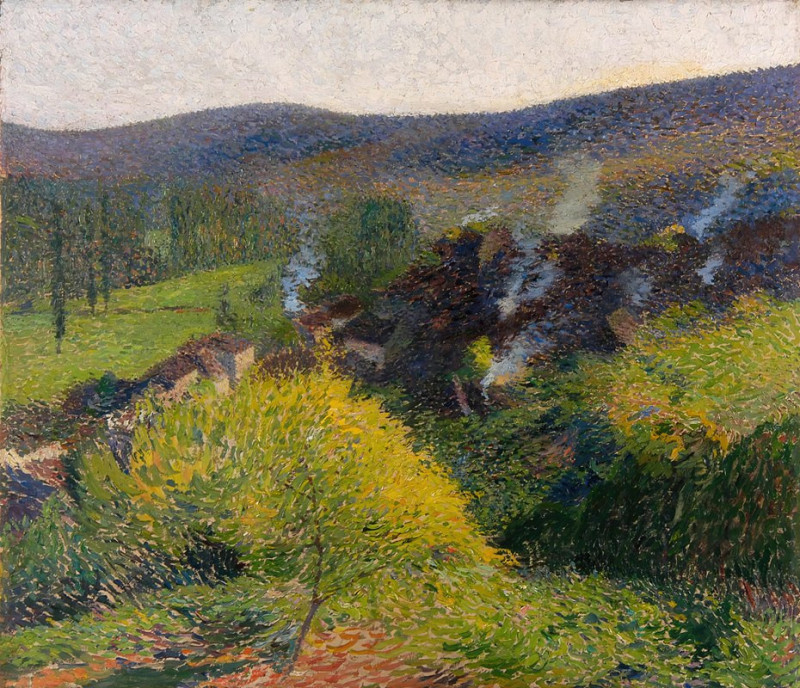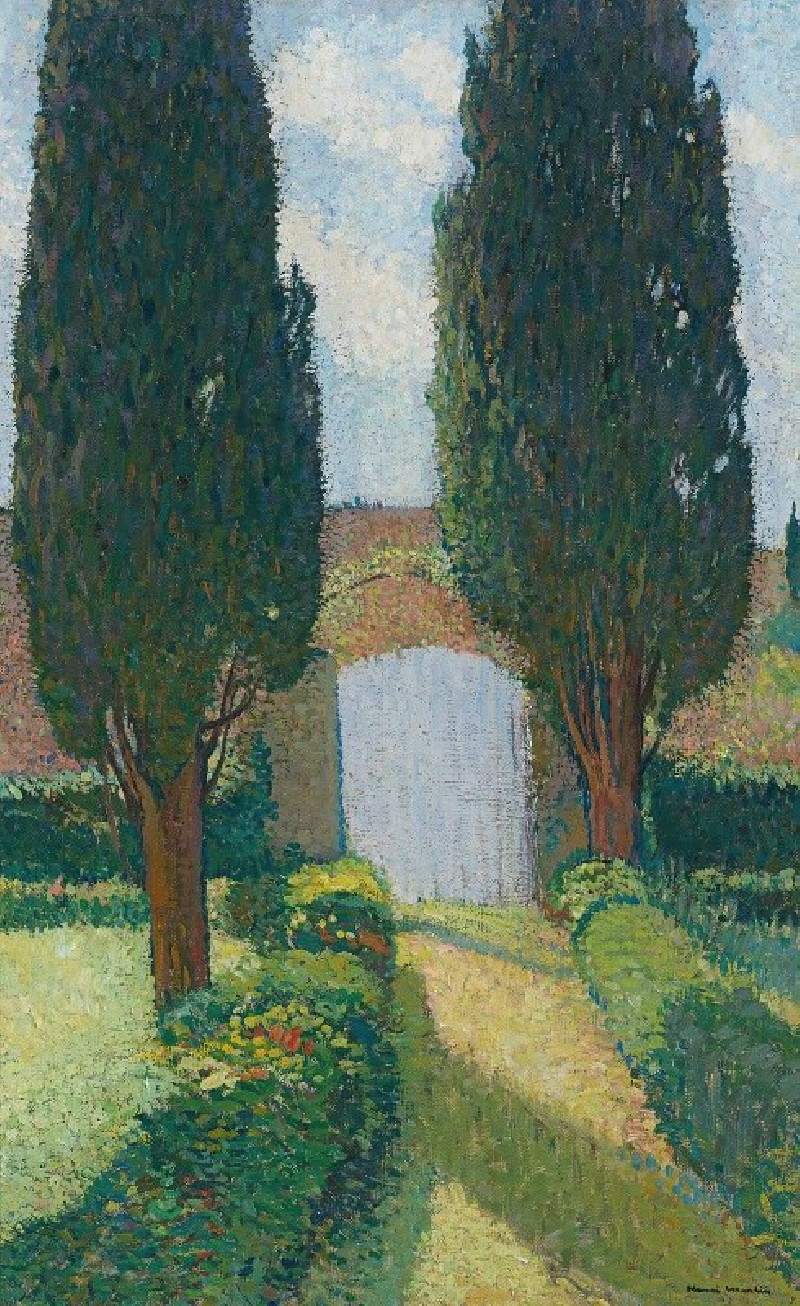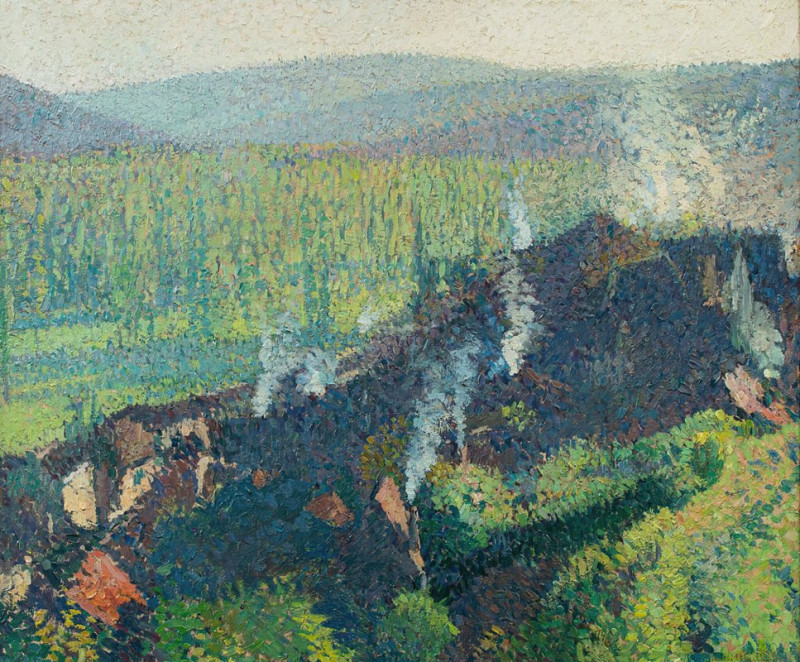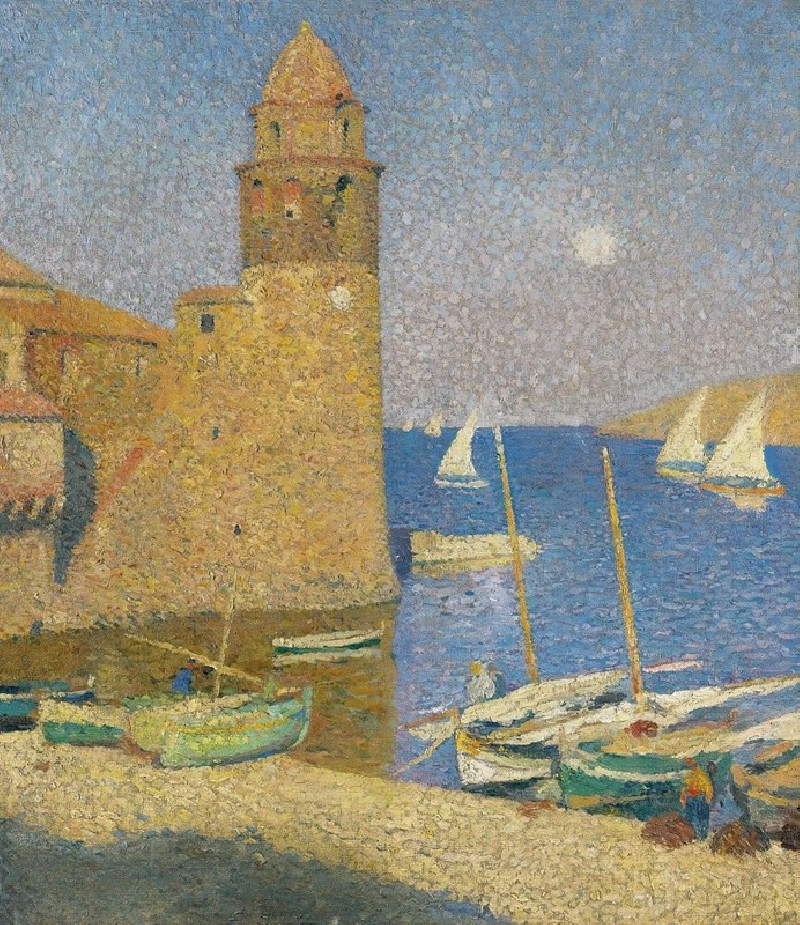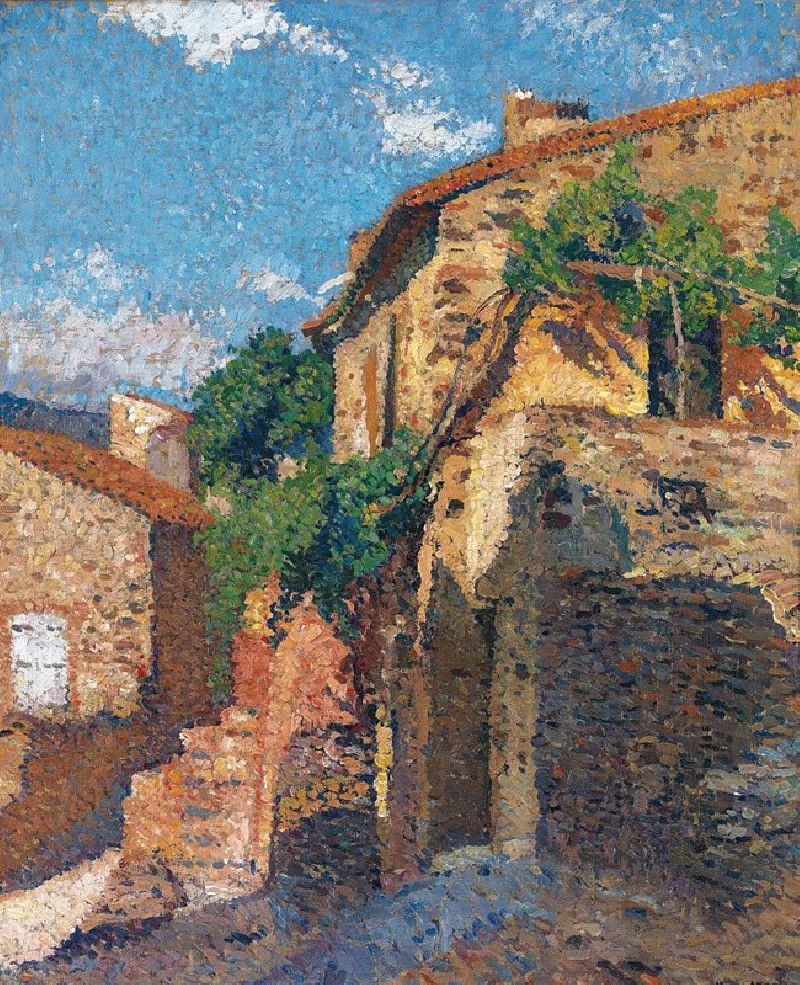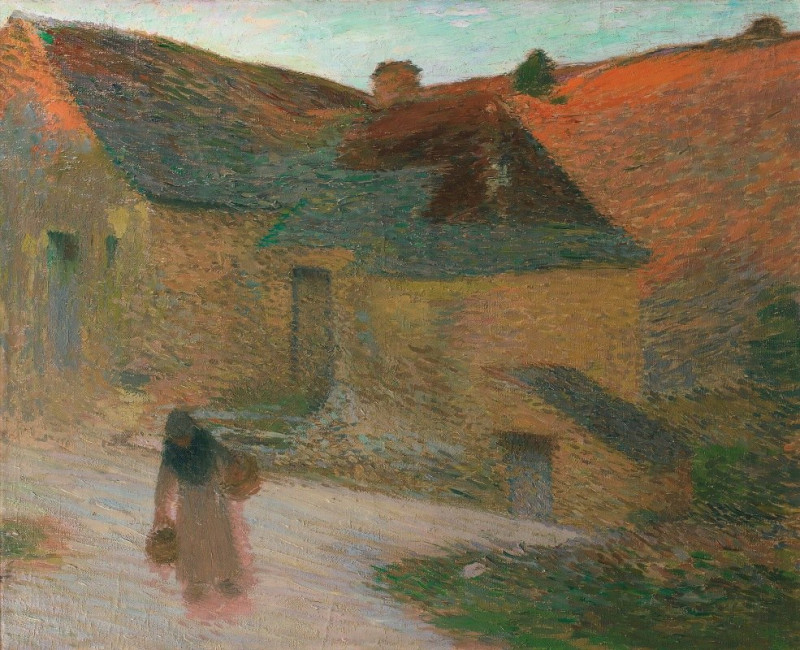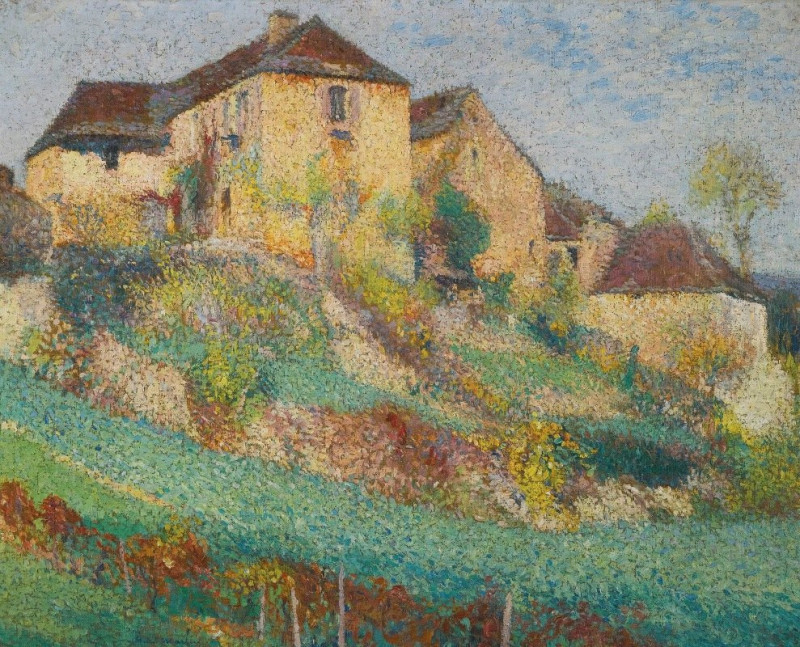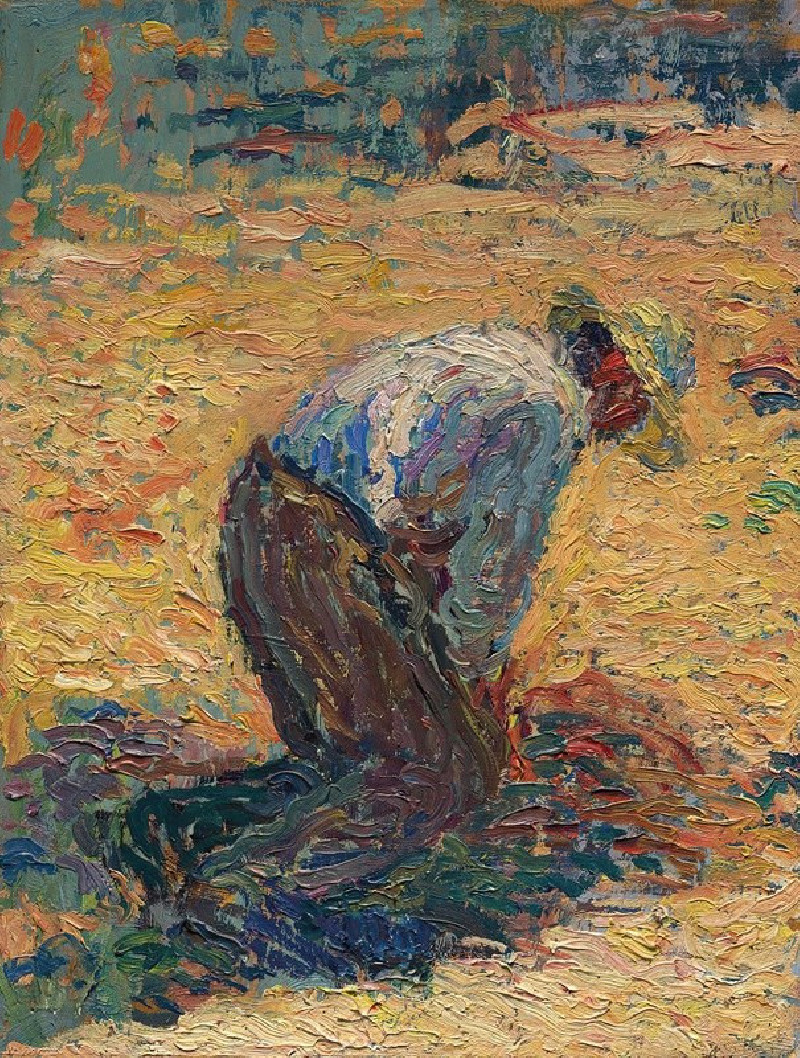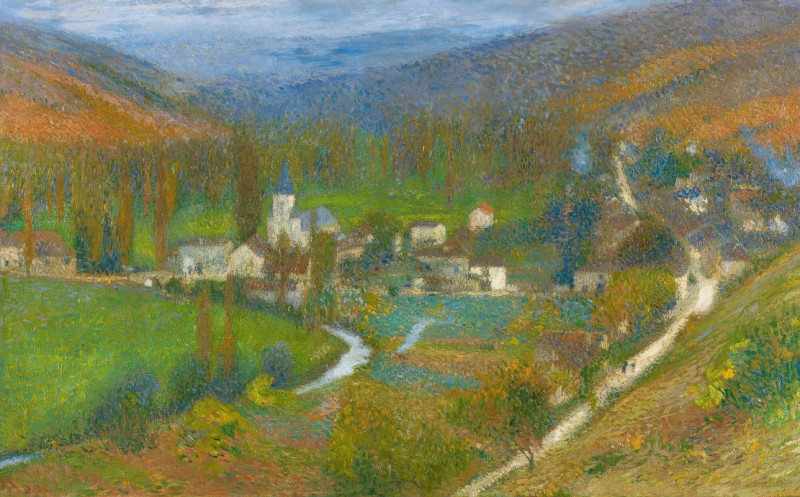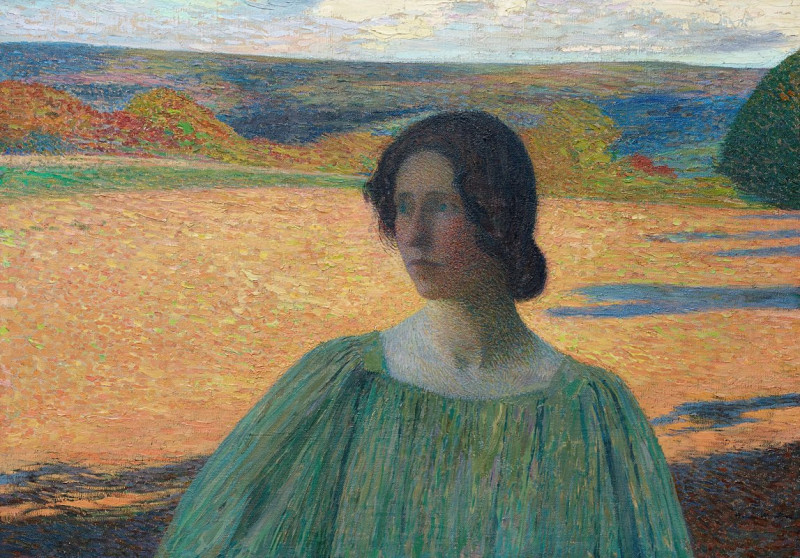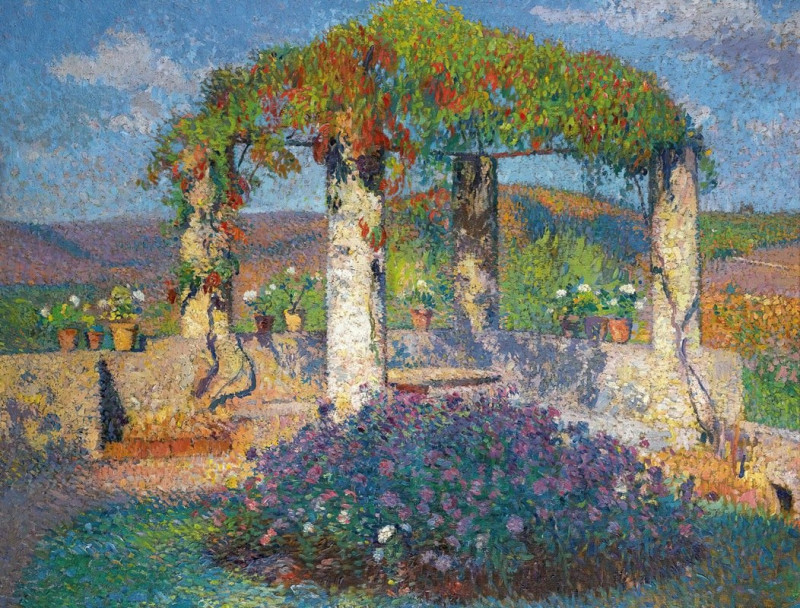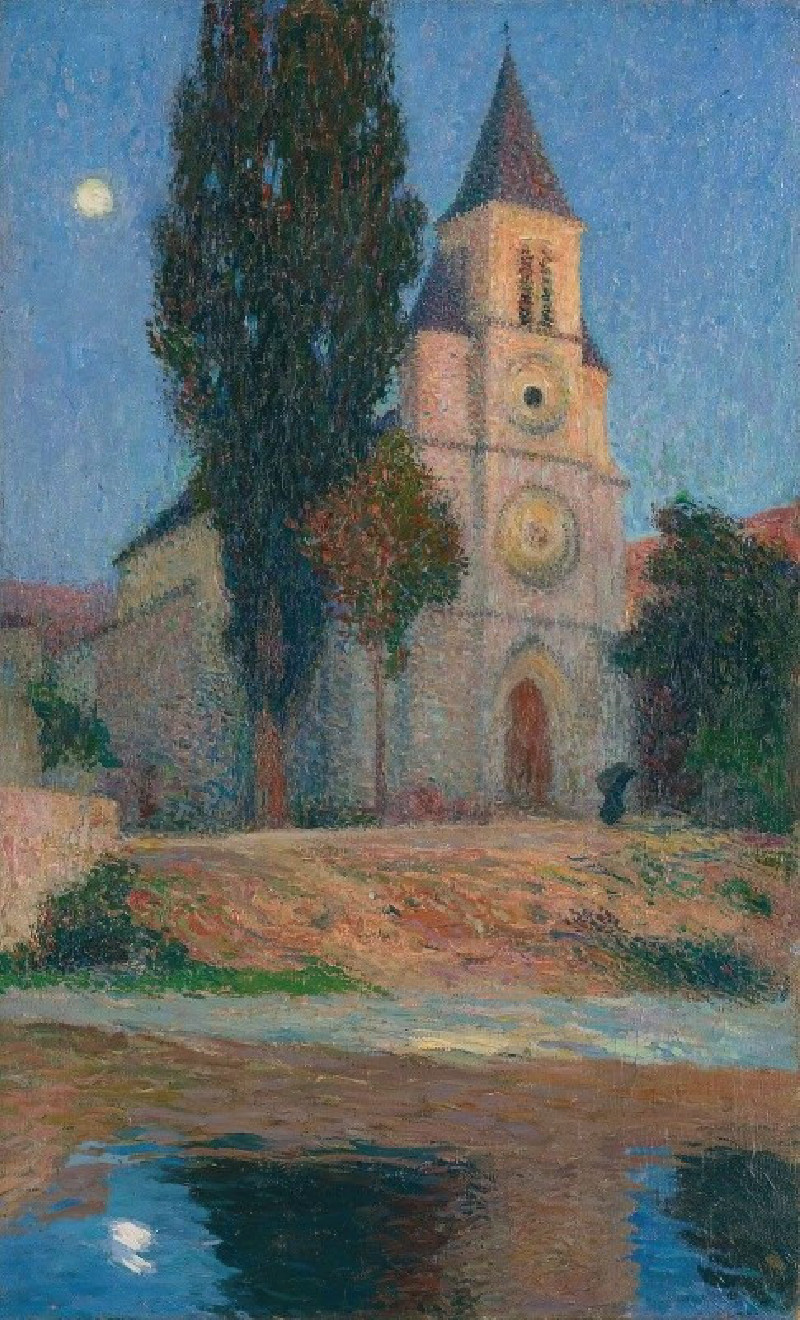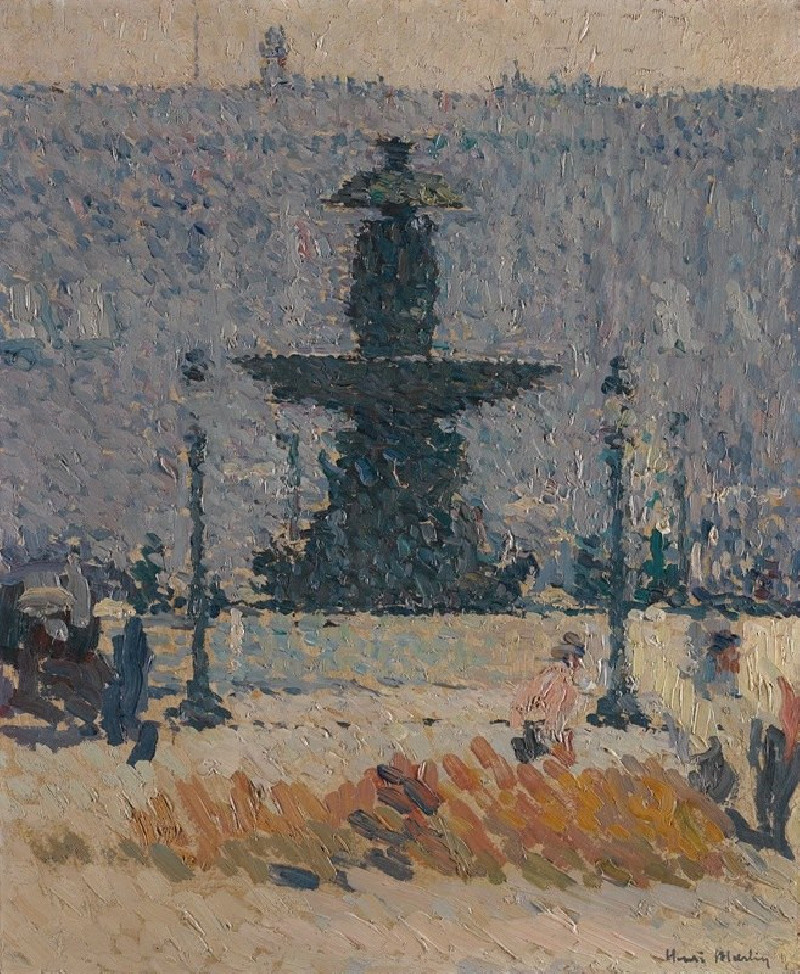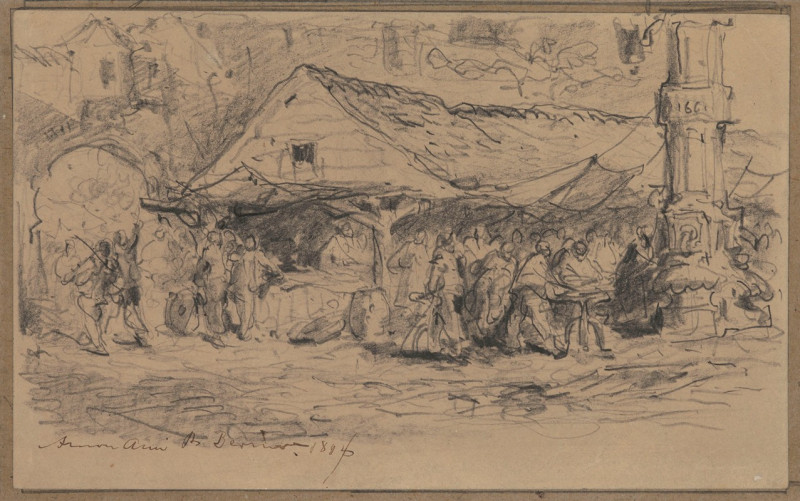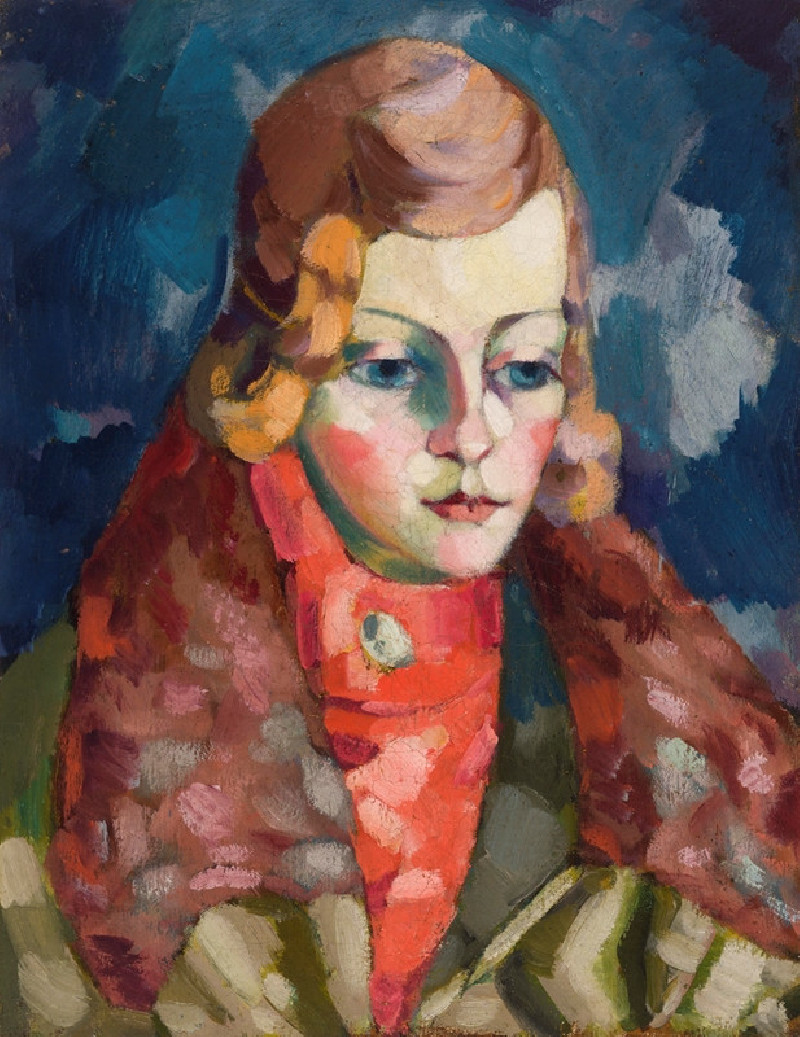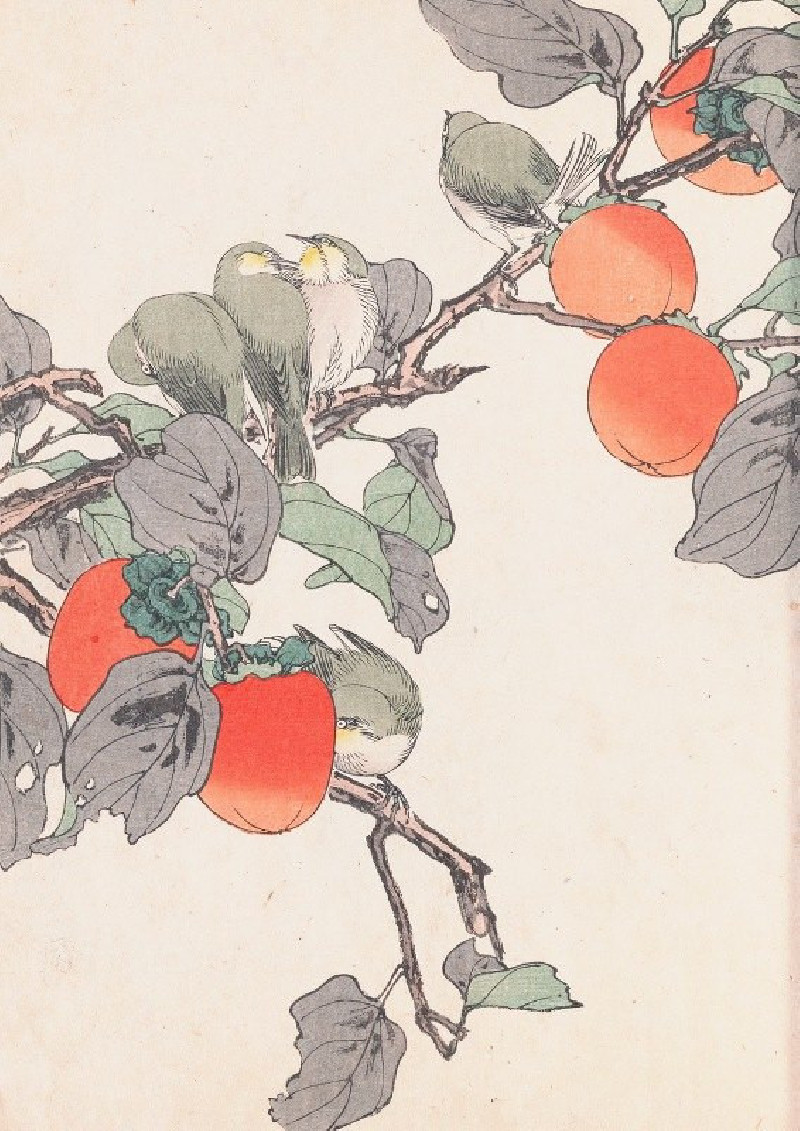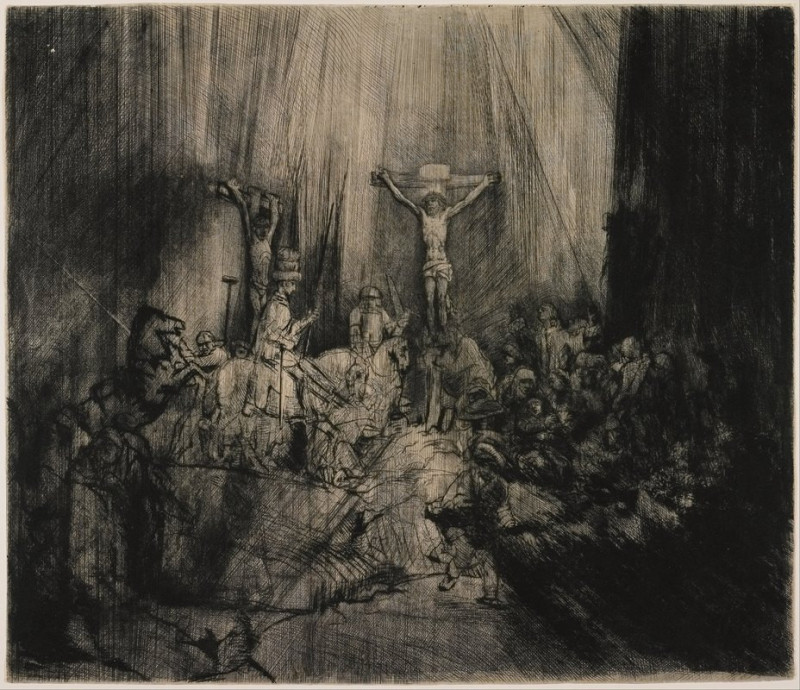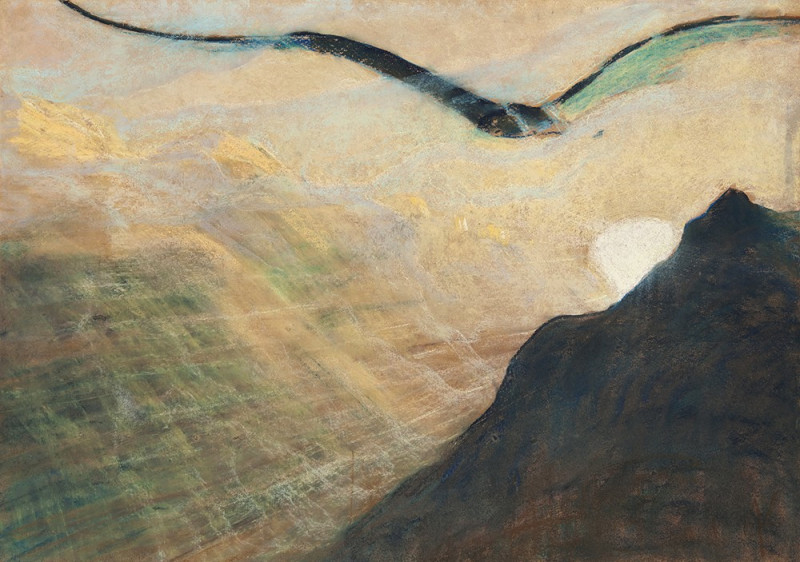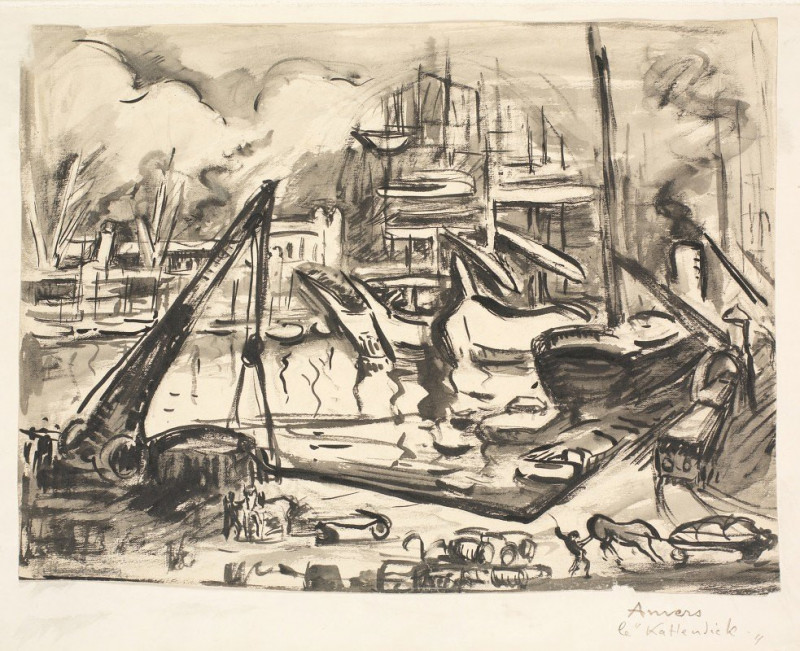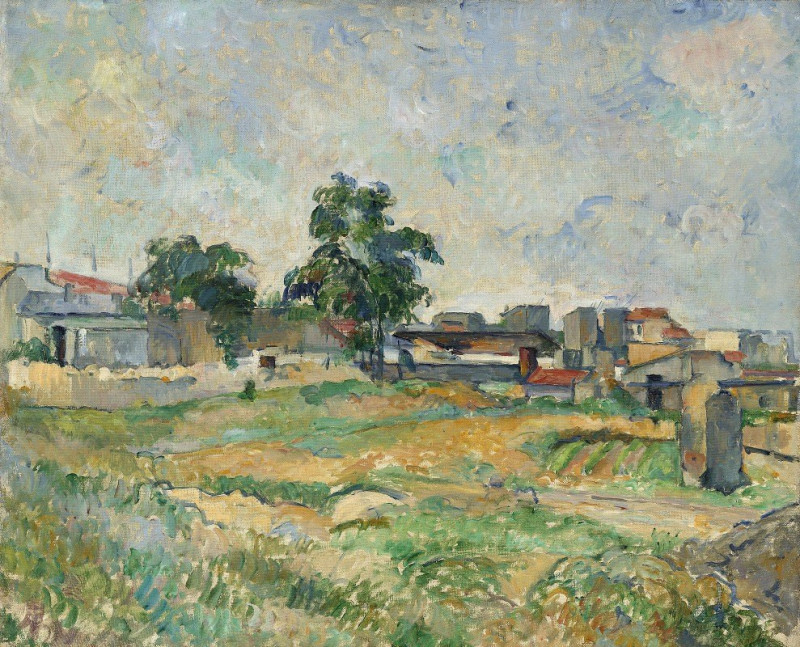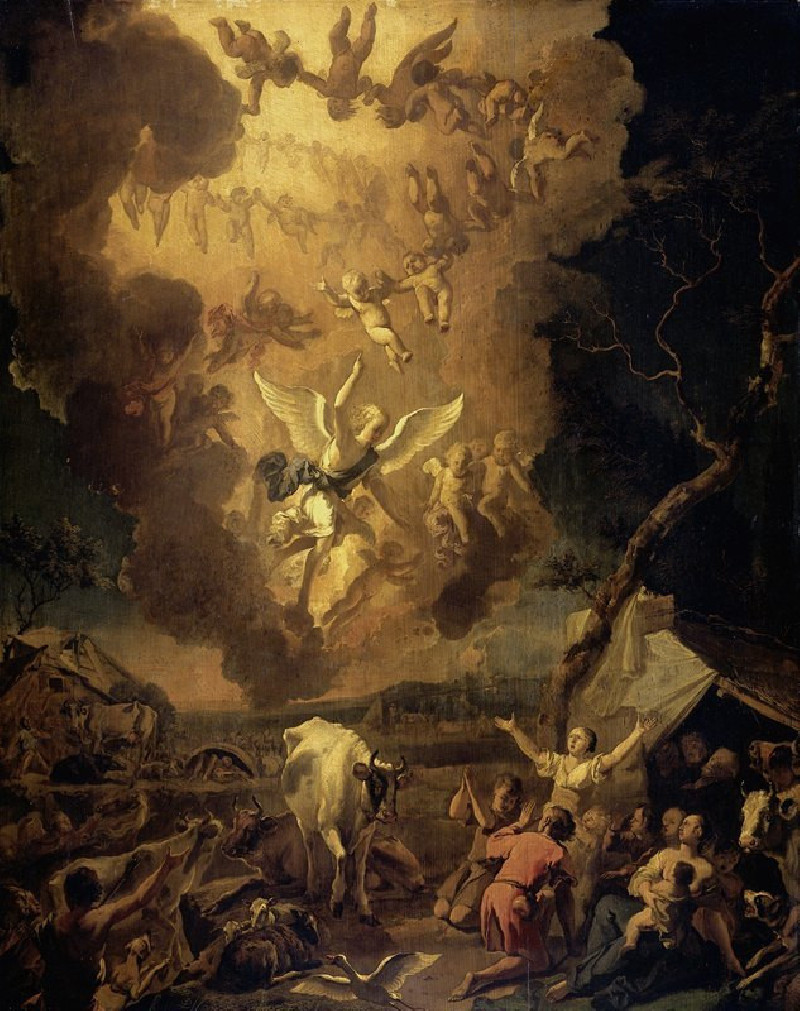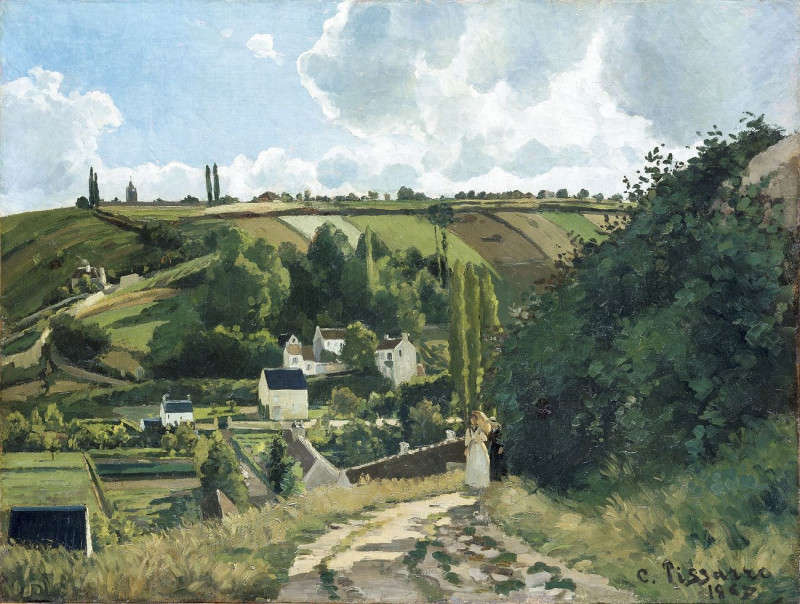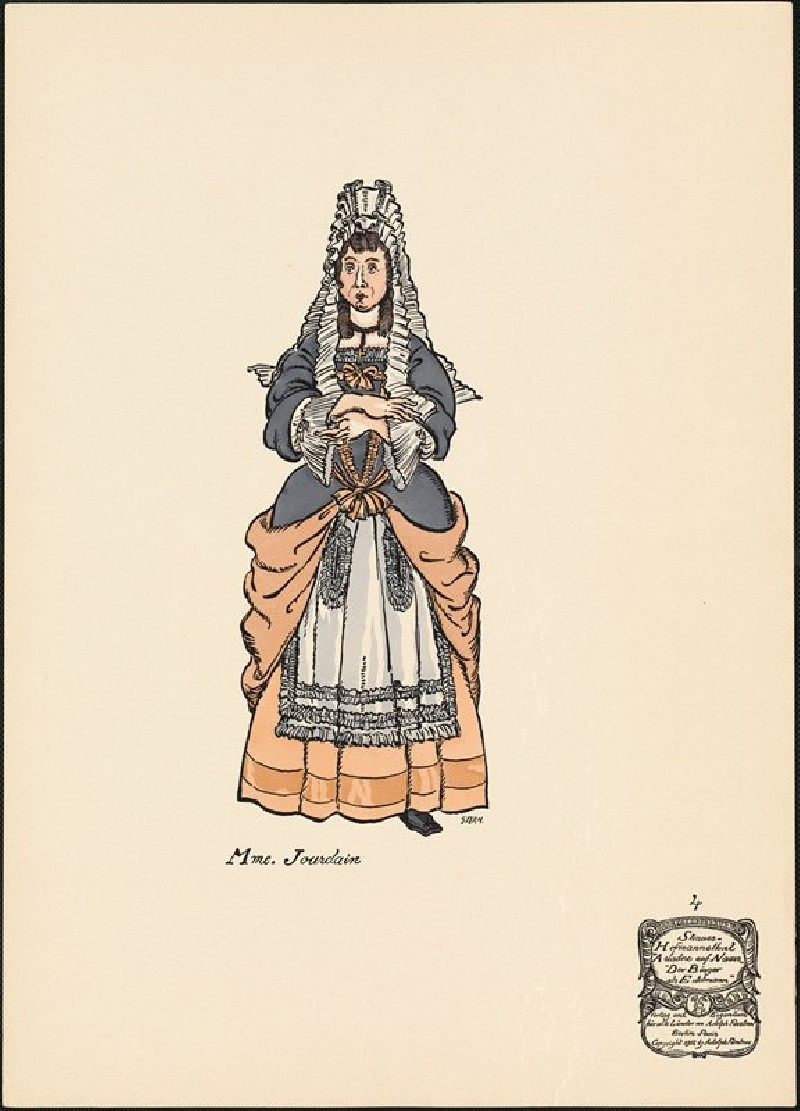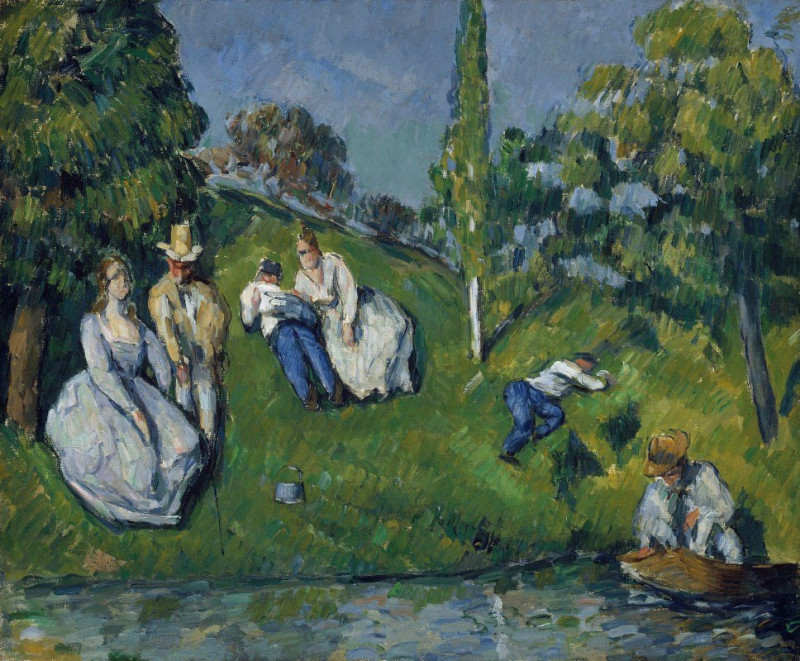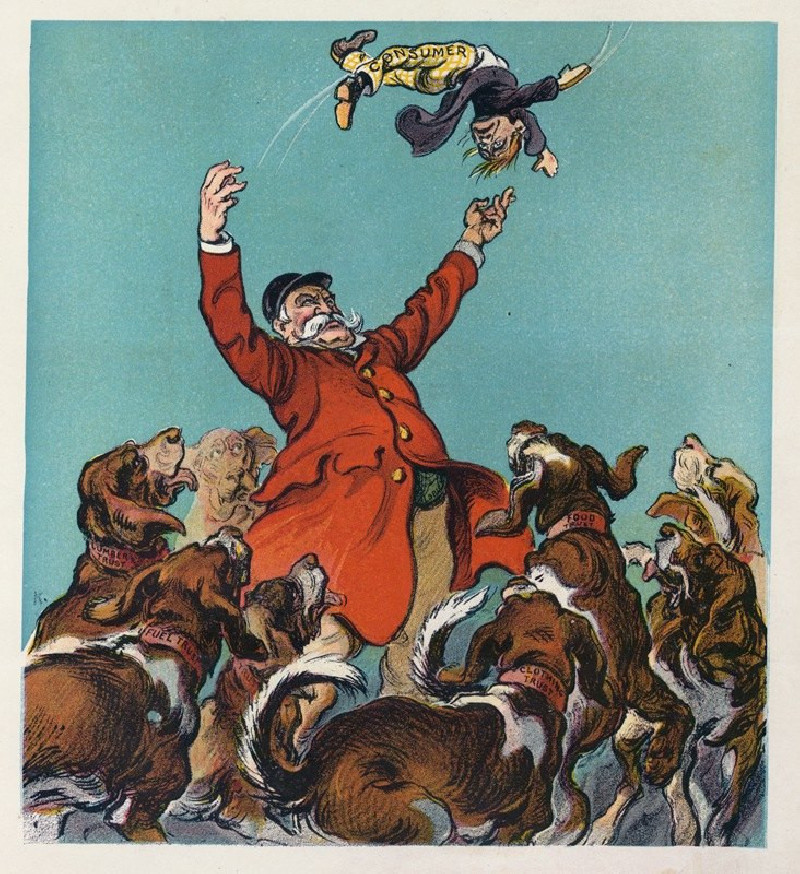L’église de Labastide-du-Vert avec le pont et la rivère, un soir d’automne
Technique: Giclée quality print
Recommended by our customers
More about this artwork
Artist: Henri MartinDive into the serene world of Henri Martin's picturesque painting, "L’église de Labastide-du-Vert avec le pont et la rivière, un soir d’automne." The scene captures a quaint village nestled in the embrace of lush, rolling hills, depicted in the vibrant hues of autumn.In the heart of the composition stands a charming church, its white tower piercing the sky, serving as a focal point around which the village unfolds. Surrounding the church are scattered homes, their roofs painted in soothing earth tones. A beautiful, arched stone bridge crosses a gently flowing river, adding a sense of age and history to the tranquil setting.Martin's use of vibrant, textured brushstrokes enhances the natural beauty of the landscape, imbuing it with a dynamic, almost pulsating energy. The trees and hills are cloaked in shades of orange, yellow, and green, suggesting the fleeting beauty of an autumn evening. The river reflects the sky's purple and blue, hinting at the coming dusk.This painting not only showcases Martin’s mastery in depicting light and color but also evokes a deep sense of peace and nostalgia. It transports viewers to a simpler time and place, allowing them to momentarily escape into the serene French countryside.
Delivery
Returns
Henri-Jean Guillaume "Henri" Martin (5 August 1860 – 12 November 1943) was a French painter. Elected to the Académie des Beaux-Arts in 1917, he is known for his early 1920s work on the walls of the Salle de l'Assemblée générale, where the members of the Conseil d'État meet in the Palais-Royal in Paris. Other notable institutions that have featured his Post-Impressionist paintings in their halls through public procurement include the Élysée Palace, Sorbonne, Hôtel de Ville de Paris, Palais de Justice de Paris, as well as Capitole de Toulouse, although the Musée des Beaux-Arts de Bordeaux and Musée des Augustins also have sizeable public collections.


